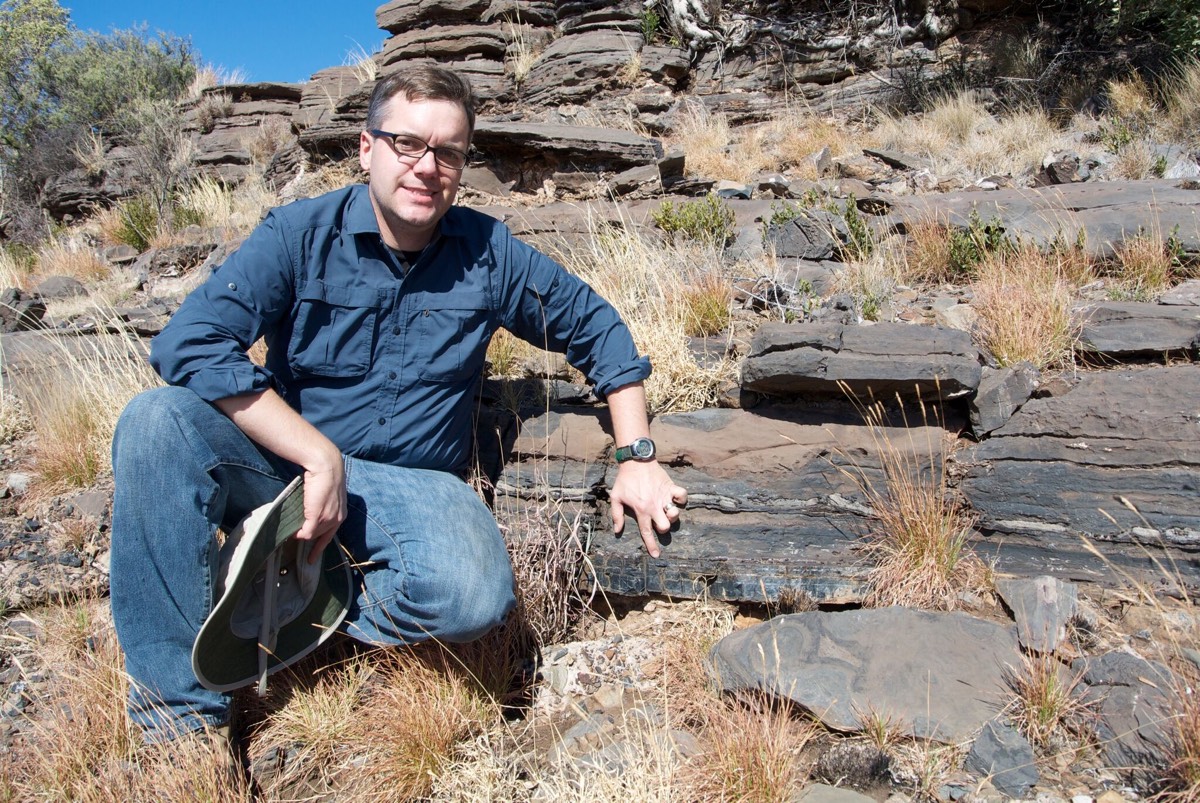2.5-Billion-Year-Old Fossils Predate Earth's Oxygen

Fossils of what may be the oldest sulfur-eating bacteria ever found have been discovered in rocks dating back a staggering 2.52 billion years.
The fossils don't represent the oldest life on Earth by any stretch — there are fossils of microbes that are at least a billion years older — but they are the oldest of their type. They also illuminate a mysterious phase of geologic history, when there was hardly any oxygen in the air and photosynthesis — the process that would eventually oxygenate the atmosphere — had just evolved, said study leader Andrew Czaja, a geologist at the University of Cincinnati.
Rather than using oxygen to survive, these bacteria would have turned hydrogen sulfide into sulfate (the oxidized form of sulfur), using the energy from that chemical reaction to grow, Czaja said.
"There's still a lot we don't know about the early history of Earth," simply because few fossil-containing rocks still survive from that time, Czaja told Live Science. And yet the era between 3.5 billion and 2.5 billion years ago was crucial for life on the planet.
"Everything was evolving; all these different bacterial metabolisms were evolving," Czaja said. [7 Wild Theories on the Origin of Life]
Deep dive
But until now, most of what researchers knew about this eon, called the Archean, has been based on a handful of fossils from shallow-water environments. Czaja and his colleagues wanted to know what might have been lurking in much deeper parts of the sea. They hunted for fossils in two areas of South Africa's Northern Cape province, looking for signs of ancient life in the Gamohaan Formation. A section of rock called black chert in this formation formed from sediment in the deep ocean, Czaja said, probably at least 300 feet (100 meters) down.
"It's only one of a couple places you can go" to find rocks so old, Czaja said.
Sign up for the Live Science daily newsletter now
Get the world’s most fascinating discoveries delivered straight to your inbox.
The researchers collected samples and brought them to the lab, where they sliced them into thin, stained-glass-like sections that could be examined under a light microscope. Immediately upon looking at the section, Czaja noticed elliptical structures, wrinkled like partially deflated beach balls, embedded in the chert.
"As soon as I saw them in the rock, I thought, 'That looks biological,'" he said.
A geochemical analysis revealed that the structures were made of organic carbon, a hallmark of fossilized life. But the cells were about 100 to 200 microns in diameter, too big to be cyanobacteria, the type of ocean-dwelling bacteria that use photosynthesis to survive. (A micron is one-millionth of a meter; a human hair has a diameter of about 50 microns.) Czaja considered that the cells might be eukaryotic plankton, or plankton with cell walls, but the bacteria lacked the molecular structures seen on the surface of these organisms. What they resembled most was sulfur-oxidizing bacteria that live in deep ocean sediments today, Czaja found.
A pre-oxygen ecosystem
Other ancient sulfur eaters have been found, Czaja said, but they were a few hundred million years younger and shaped like stringy filaments. This is the first evidence of spherically shaped sulfur oxidizers, he said.
If the identification is right, the smooshed little spheres might fill in an ecological gap, Czaja said. The chemistry of rocks from this time period have suggested that for at least 3.5 billion years of history, organisms that reduce sulfate into hydrogen sulfide have existed on Earth. These bacteria turn sulfate into hydrogen sulfide in order to capture and harness the energy from the reaction.
But there was very little oxygen in the atmosphere to create oxidized sulfur before about 2.3 billion years ago, when photosynthetic organisms permanently altered the atmosphere with their oxygen emissions. The newly discovered sulfur oxidizers could be a source of the oxidized sulfur that sulfate reducers of the era needed for fuel, Czaja said.
"These organisms that I discovered could potentially help close that loop by being the organisms that take reduced sulfur and convert it to oxidized sulfur," he said.
In modern-day deep ocean sediments, bacteria do just that, he added: Sulfur-oxidizing bacteria often live right on top of sulfur-reducing bacteria in the sediments, and the two recycle each other's waste products.
Czaja and his colleagues plan to further analyze the chemistry of the fossils to find out more about their metabolism.
"I want to get back to South Africa and try to search for more," Czaja said.
The researchers reported their findings in the December issue of the journal Geology.
Original article on Live Science.

Stephanie Pappas is a contributing writer for Live Science, covering topics ranging from geoscience to archaeology to the human brain and behavior. She was previously a senior writer for Live Science but is now a freelancer based in Denver, Colorado, and regularly contributes to Scientific American and The Monitor, the monthly magazine of the American Psychological Association. Stephanie received a bachelor's degree in psychology from the University of South Carolina and a graduate certificate in science communication from the University of California, Santa Cruz.









